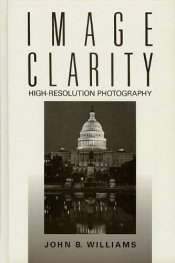And of course sharp and high resolution are not necessarily the same thing.
Of course, technically, sharpness can be defined as the combination of resolution and acutance...
... but artistically the concept is quite ample.
About that subject, I found this book is quite interesting:

Personally, I contact print 8x10" negatives on photopaper, with the 8x10" print being worth probably 300 to 500 MPix effective, it can be explored with a x8 magnifier without noticing a flaw... but this does not make the image sharp per se.
If we have a sharp idea for the image then we may be on track.
Last edited:






